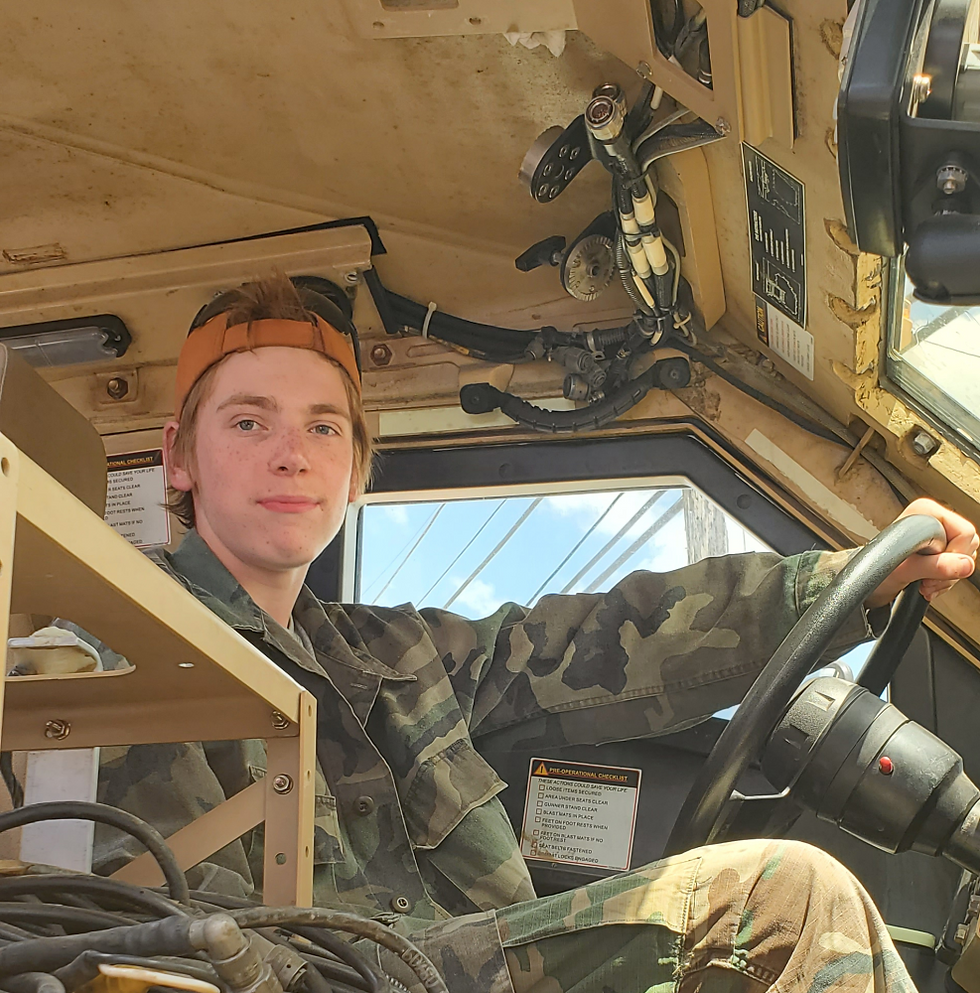School Security. First, close the door.
- EG Weiss

- Mar 10, 2023
- 6 min read

There is no cure-all when it comes to school security. In August, roughly 140,000 students returned to Dallas schools in the wake of the Uvalde shooting at Robb Elementary School on May 24. District officials made sure that the public knew they were pledging to keep students safe this year.
The high-profile Uvalde shooting put school safety in the forefront once again and that security became a focus of parents, teachers and students for the first time in a while. As in any event like Uvalde or Katrina, after time the urgency to solve problems lessens and is overrun by other issues whether they be financial, political or personal. In this case, Dallas schools took Uvalde to heart and began to implement changes to keep the students safer, but is it all enough?
Authors Note: Dallas (DISD) is being used in this article as an example of a large school district with many obvious threats. The school district is doing a fantastic job of implementing new procedures and is not being criticized in this article but is being used as a subject of study.
Last fall the Dallas schools outlined their plans which included enhanced training, social media monitoring and checking campuses for safety issues. One of the more obvious changes was the requirement that all students must carry backpacks that are either mesh or clear plastic. Regular backpacks and bags are now forbidden on all Dallas campuses.
DISD also unveiled their plan to purchase 100 hand-held wands to distribute to elementary campuses that want to use them. The decision to make wands available to the elementary schools was due to the lower threat level at these schools but the District has installed over 400 walk-through metal detectors in secondary schools over the last two years.
The total expenditure for these changes? A cool $100 Million.
As DISD’s Emergency Management team step up risk assessment patrols on campuses and check on things like access doors being left unlocked, the question I wish to bring up is this: How much is it going to cost and how long will it take to fix the human error side of school security?

Recently, while performing a risk assessment tour of a campus, I discovered doors that were perfectly capable of locking but that had been propped open with brooms, garbage cans, paper towel stuffed in the lock mechanism, cardboard pieces in the latch and one door was held open by a rock!
I know that DISD has laid plans to make sure doors are checked twice a week, but what if it is not the door that is broken and it is the people?
I also know that if I was to interview staff at any school in the country they would tell me that they take security seriously, but how do we measure that concern? How do we know that one teacher’s concern is excessive while the other teacher’s concern borders on apathy? They both tell us they are concerned!
While risk assessments can become very complicated and drawn out processes, there is, I believe, a way to train personnel to operate as emergency managers in their own right; learning how to pay attention to details, to imagine scenarios within their own minds and then concoct mitigation measures on their own.
I believe that we should be training every teacher, every cafeteria worker, every administrator, every maintenance worker and every coach not only in active shooter, but in emergency management. TRUE emergency management.

Last week, lines of students stretched out into the campus parking lots as entering the school became a lot like going through TSA at a congested airport. Students were, for the first time, being introduced to the new metal detectors that had been installed a little over a week ago at Lake Highlands High School in Texas.
While I want to applaud the motivation and determination by the school to spend whatever was necessary to ensure the safety of the students, I have to point out that the new bottle neck created by the detectors caused students to stand in the parking lots in lines. The metal detectors were installed because of a shooting that occurred across the street from the school.
You can see by the map I created that this is not solving a problem but rather creating a bigger problem leaving the students even more vulnerable.
There needs to be global assessments performed at our schools immediately. I believe that we have fallen into a rut of being reactive again and have allowed the blinders to slip down as well.

While DISD made plans last year to keep students safe this year, did these plans include red-teaming the school district? Are the cafeteria workers and maintenance crews trained as well as the teachers? How much time has been spent on peer-led risk teams developed from recruited students with an eye on emergency management as a career?
Who has looked at the trees out front of a building just as carefully as they assessed the door to the band room?
North Carolina school systems are exploring metal detectors and new-fangled weapons detection systems to keep guns out of schools. But several experts caution those systems may not be worth the millions of dollars they cost. Instead, they say, things as simple as tip lines, anti-bullying programs and door locks could provide some of the best defense against potential school shootings.
While two counties in North Carolina prepare to spend over $6 Million on AI-powered weapons detection systems, most schools and districts just do not have that money (I know my local school district does not!) and if those AI-powered systems are installed inside the buildings, the parking lot has not changed.

Decisions regarding the safety of children trying to learn should not be influenced by cost-analysis but they are. School districts are responsible for the proper maintenance of buildings, utilities, equipment and human resources. It is a lot and sometimes enough to overwhelm but might I present that the cheapest and most effective form of mitigation and prevention is training.
It would never cost $6 million to train the entire staff of a district how to think, act and walk like they are emergency managers. It would never cost $4 Million to hold programs that walked teachers and student alike the concept of risk assessment.
Not every school system will do the same — some don’t have the financial ability and others may choose a different route. In the end, experts say, school systems have to make their own cost-benefit analyses to determine the best way to spend their money to make the biggest improvement to school safety.
I would also point out that school districts need to be very wary when it comes to purchasing the “latest and greatest” technologies. Because AI and the tech market is moving so fast, there are a lot of fast-talking sales people out there. I recommend hiring someone from the security field to act as a consultant as you make purchases.

Research on the effectiveness of metal detectors at schools is pretty minimal still. Schools need to realize that there is no real cure for what the root problem is…violent people in a violent world. What districts need to do is make wise decisions and invest in training. If a door has bullet proof glass, it is worthless when the door is left open or if someone will open the door for anyone that knocks.
Remember that not all weapons are metal so metal detectors won’t work every time…nothing will. Tip lines, open communication, training for the ENTIRE staff, doors that lock from the inside, minimizing publicity when there is a shooting, bullying programs, campaigns for gun safety in the homes if students and monitoring social media are probably still the most effective measures any school can take.
There is some good news. A recent analysis found that while more children are dying of gun violence than in recent decades, less than 1% of them die in school shootings. It is also safe to say that statistics prove that schools are relatively safe places and that mass shootings are highy unlikely in the normal school setting.

Security is still a real problem as proven by the most recent U.S. Department of Education report that tallied a whopping 93 K-12 school shootings in the 2020-21 school year. Of those, 43 were deadly, but we need to remember that the numbers are still relatively low nationwide (about .08% of schools had an incident).
As I have said, before the investment is made, remember that according to the Department of Homeland Security, TSA screenings failed 70% of the time in testing. It all still comes down to creating the proper atmosphere and making smaller but more changes.



Comments